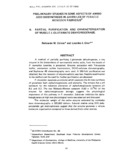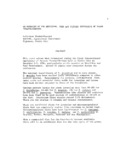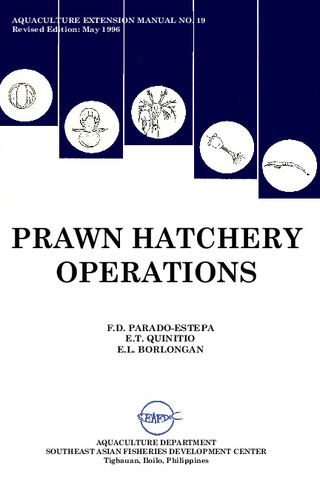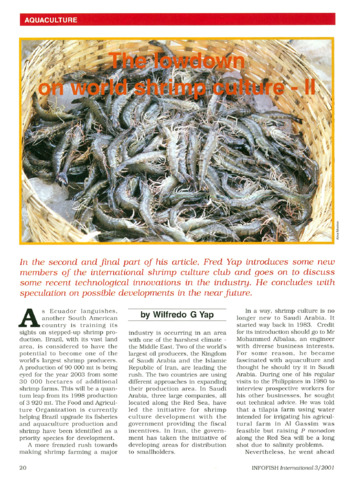Preliminary studies in some aspects of amino acid biosynthesis in juveniles of Penaeus monodon Fabricius: II. Partial purification and characterization of muscle L-glutamate dehydrogenase
Share
Abstract
A method of partially purifying L-glutamate dehydrogenase, a key enzyme in the biosynthesis of non-essential amino acids, from the muscle of P. monodon juveniles is presented. Enzyme extraction with Tris-acetate buffer, ammonium sulfate fractionation, DEAE-cullulose chromatography, and Sepharose 4B chromatography were used. A 260-fold purification was obtained, but the recovery of enzyme activity was low. Possible modification in the method and the need for further purification are discussed.
P. monodon possesses an enzyme which catalyzes the de novo synthesis of glutamate from alpha-ketoglutarate and ammonia. The enzyme has a pH optimum for the reductive amination of alpha-ketoglutarate between pH 8.0 and 8.2. The low Michaelis-Menten constant (1.03 x 10-4M) of the enzyme for alpha-ketoglutarate strongly suggests the physiological importance of this pathway in P. monodon. Substrate inhibition by alpha-ketoglutarate at high non-physiological levels was observed and discussed.
The molecular weight of the native enzyme estimated by molecular sieve chromatography is 320,000 daltons. Subunit studies using SDS polyacrylamide gel electrophoresis suggest that the enzyme possesses a unique molecular organization compared to those derived from other sources.
Description
SEAFDEC Contribution No. 96.
Suggested Citation
Coloso, R. M., & Cruz, L. J. (1980). Preliminary studies in some aspects of amino acid biosynthesis in juveniles of Penaeus monodon Fabricius: II. Partial purification and characterization of muscle L-glutamate dehydrogenase. Bulletin of the Philippine Biochemistry Society , 3(1-2), 23-37. http://hdl.handle.net/10862/1102
Subject
Taxonomic term
Collections
- AQD Journal Articles [1248]
Related items
Showing items related by title, author, creator and subject.
-
An overview of the nutrition, feed and feeding techniques of prawn penaeid/shrimps
Piedad-Pascual, Felicitas (Philippine Council for Aquatic and Marine Research and Development, 1989)This paper echoes what transpired during the first International Conference of Penaeid Prawns/Shrimps held in Iloilo City in December 4-7, 1984, particularly on the Nutrition nd Feed Development. Around 25 papers were ... -
Prawn hatchery operations
Parado-Estepa, Fe D.; Quinitio, Emilia T.; Borlongan, Emeterio L. (Aquaculture Department, Southeast Asian Fisheries Development Center, 1996-05)The manual, an updated version of the 1984 SEAFDEC/AQD manual, presents the underlying principles and step-by-step instructions of prawn larval and post-larval rearing. The techniques described are not only applicable to ... -
The lowdown on world shrimp culture - II
Yap, Wilfredo G. (INFOFISH, 2001)This paper introduces some new members of the international shrimp culture club and goes on to discuss some recent technological innovations in the industry, particularly the polyculture of tilapia (mainly Oreochromis ...




